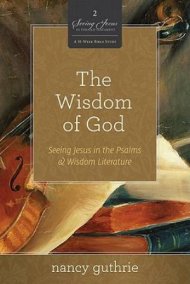AUTHOR: Leland Ryken, Philip Ryken and Todd Wilson.
PUBLISHER: Grand Rapids, MI: Baker Books, 2012, (192 pages).
This book teaches us to read literary works, with a special focus on learning the portrait of pastors, leaders, and the pastoral calling. Written in two parts, it is different from a typical non-fiction book in the sense that it shows rather than tells us what to do.The authors gently remind us that literary works are firstly to be understood as a presentation of a human experience. This keeps readers patiently mindful and emotionally ready to shake hands with the text. Secondly, literary texts are for readers to appreciate the authors' interpretation of that experience. This enables readers to embrace the author's understanding like a warm hug. Whether the reader agrees or not is another matter. Understanding is key. Thirdly, it is for the enjoyment of the many creative literary techniques, forms, and beauty. This helps readers to look with the original authors, interpreters, and all, to look in the same direction to appreciate life as a whole.
Part One is the major section of the book, drawing a sharp portrait of the pastoral life through 12 classic works. It lists some essential information like author's background, date published, era concerned, book length, setting, and plot overviews. What is helpful is the description of the characters played out. The unique value of this book is the way the authors sieve out the implications for pastors, leaders, and the pastoral ministry, through themes and insights for leadership. For example, in "The Scarlet Letter," the Rykens summarizes the book with the words, "Hidden Sin and Its Consequences" while at the same time describes the themes of sin, shame, revenge, punishment, salvation, and forgiveness. It is a 'negative example' that can be used to facilitate a life more aware of the potency of sin. There is also the 'positive example' of perseverance in spite of great suffering. In 'Cry, the Beloved Country,' suffering is seen not as something to be despised and hated, but to be endured for sanctified service. Each chapter ends with a pertinent 'reflection or discussion' section that drives home the theme for application. The questions turns a fictional work into a very personal application, for a non-fictional world.
Part Two is like the section of minors, that bring together 58 short reflections and summaries of literary works. The subheadings of each chapter basically condenses the learning points in one short quip. It does not go into similar depth like the 12 works in Part One. Instead, it points readers with handles to appreciate the texts from a ministry and minister perspective. It looks very much like an extended annotated bibliography of books, much like Eugene Peterson's "Take and Read - Spiritual Reading: An Annotated List." Some of the notable works include "The Poisonwood Bible," "Les Miserables," "Father Brown," "The Brothers Karamazov," and even two of Jane Austen's novels!
Closing Thoughts
Even though many of the works are fictional, the experiences and the emotional ups and downs are real and authentic. It shows us the deep struggles and inner angsts of people in the pastoral vocation. There are many things in ministry that cannot be explained through words, or even stories. Some experiences need the help of good literary devices in order to do justice to the nuances of the emotions.
In a world of modern bookstores packed with story books like Chicken Soup series or all kinds of short stories that aim to inspire or create feel-good emotions, books like Pastors in the Classics, go much deeper, wider, and I dare say, richer. Just the table of contents and introduction pages are worth the price of the book. The literary beauty and brilliance that Pastors in the Classics contains reminds us all over again, that good books are hard to come by. Once they do pass by, read it, for we may not know when we will get another chance to read another good book.
This book is a collectable item for leaders, pastors, ministry workers, teachers, students, and all readers wanting to have a great literary experience.
Ratings: 5 stars of 5.
conrade
"Book has been provided courtesy of Baker Publishing Group and Graf-Martin Communications, Inc. Available at your favourite bookseller from Baker Books, a division of Baker Publishing Group".














